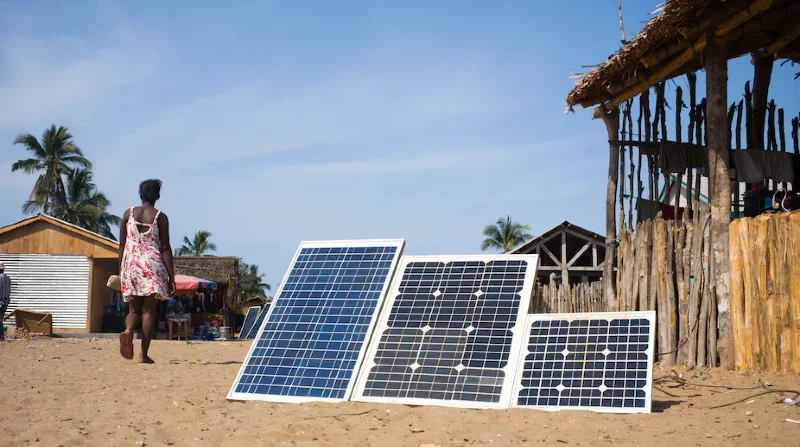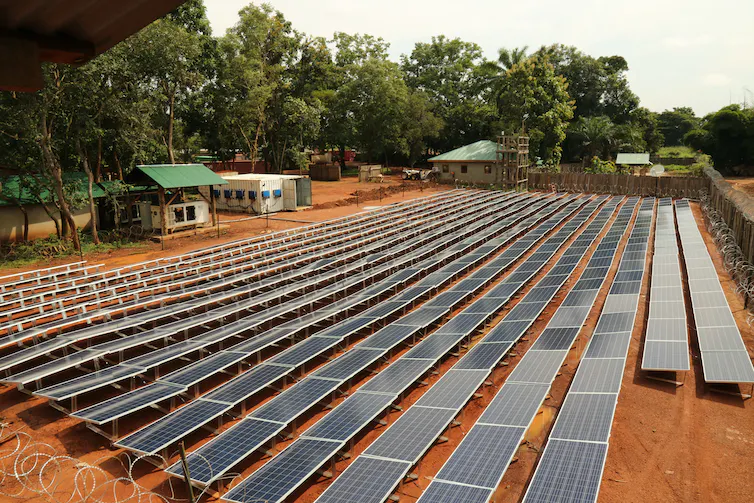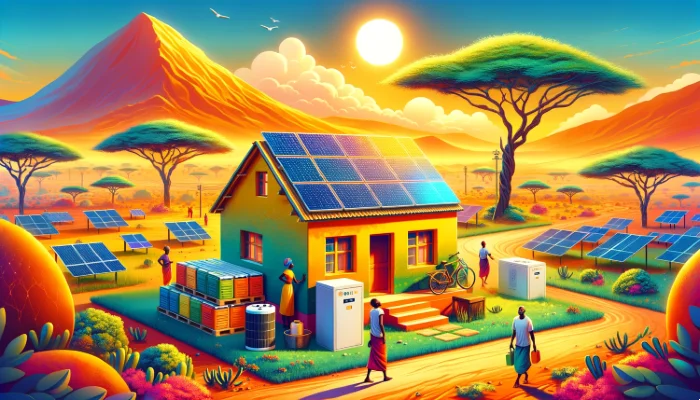In 2024, a stark reality confronts us: over six hundred million people in Africa still live without access to electricity. This energy gap poses a significant challenge, but also an opportunity for transformative solutions. Among these, distributed renewable energy systems, specifically solar and battery storage technologies, are emerging as key players.
Not long ago, the high costs of these systems put them out of reach for many in Africa. However, a seismic shift in the industry is changing the landscape, making sustainable energy more accessible than ever before.
The Evolution of Solar and Battery Technology
Since the mid-2010s, the solar and battery storage industry has undergone a remarkable transformation. Back in 2015, the landscape was vastly different – solar systems, especially those with battery backup, were prohibitively expensive, and the technology was less efficient. Fast-forward to 2023, and we’re witnessing a new era where these technologies aren’t just accessible but are setting new standards in energy solutions.
Battery Storage Breakthroughs
The transition from traditional lead-acid batteries to Lithium Iron Phosphate (LFP) batteries marks one of the most significant advancements. LFP batteries offer higher energy density, meaning they store more power in less space, and they’re longer-lasting. Additionally, the cost of manufacturing these batteries has plummeted as production scales up globally.
Solar Panel Efficiency
Parallel to battery improvements, solar panel technology has seen its own set of breakthroughs. The efficiency of solar panels – how well they convert sunlight into electricity – has improved dramatically. We’ve moved from 250-280W panels being the norm to panels that can deliver 555W. This leap in efficiency means fewer panels are needed to generate the same amount of power, reducing both cost and space requirements.

A Closer Look at Cost Reductions
The affordability of solar and battery systems is a crucial factor driving their adoption.
In 2016, for instance, a basic solar system setup in Zimbabwe could set a homeowner back by around $34,000. But by 2023, the cost of a similar system had dropped to about $14,000 – a reduction of over 50%.
To really put this into perspective… just seven years ago, a single Watt from a solar panel would run you about seventy cents. Jump to 2023, and that same single Watt is about fourteen cents.
But, this is 2024 now and solar panel experts in Africa are expecting that one Watt to cost around ten cents by the end of the year!
Factors Behind Price Drops
Several factors have contributed to this significant price drop. Economies of scale in production, both for solar panels and batteries, have played a major role.
As demand for renewable energy grows worldwide, manufacturers have ramped up production, leading to lower per-unit costs. Technological innovations, particularly in material science and manufacturing techniques, have also driven down prices.
Government Policies and Subsidies
In some regions, government policies and subsidies have also helped reduce costs. These policies are aimed at encouraging the adoption of renewable energy to meet climate targets and reduce dependency on fossil fuels.
Impact on Energy Accessibility
This leap in technology and reduction in costs has a direct impact on energy accessibility, especially in off-grid and rural areas. In many parts of Africa, where the grid is either non-existent or unreliable, solar and battery systems offer a viable alternative.
Off-Grid Solutions
In off-grid communities, these systems provide a consistent and reliable source of power, crucial for both household use and local businesses. The ability to store energy in batteries means that power is available even when the sun isn’t shining.
Bridging the Energy Gap
For urban centers with intermittent grid power, solar and battery systems can fill in the gaps, ensuring a continuous power supply. This reliability is vital for economic activities and can significantly improve the quality of life.
More To Discover
- Greenhushing Trend Surges: Companies Shy Away from Touting Environmental Progress, Study Finds
- South Korea Debuts ‘Meaty Rice’: A Sustainable Lab-Created Protein Source
- Mystery Solved: Floating Object off Washington Coast Revealed as Renewable Energy Prototype
- Solar-Powered Fridge Tackles Energy Inefficiency and Power Outages

The Aesthetic and Space-Saving Advancements
Modern solar and battery systems aren’t just about function; form has also taken a front seat. The bulky, space-consuming designs of the past have given way to sleek, wall-mounted units. These “powerwall” style batteries aren’t only more efficient in their energy storage but also add an element of modern aesthetics to homes and businesses. This shift in design philosophy reflects a broader trend towards integrating renewable energy solutions seamlessly into everyday living spaces.
The Future Landscape of Solar Energy
Looking ahead, the future of solar energy is bright and full of potential. The integration of solar systems with electric mobility, for instance, opens up new avenues for innovation. Second-life batteries from electric vehicles could further reduce the costs of stationary battery storage. This could catalyze the adoption of solar energy in various applications, from rural mini-grids to urban residential setups.
Conclusion
The transformation witnessed in the solar and battery storage industry over the past decade is a testament to human ingenuity and our commitment to a sustainable future. These advancements haven’t just made renewable energy more affordable and accessible; they have redefined the way we think about and use energy in our daily lives. As we continue to innovate and adapt, the possibilities for cleaner, more efficient, and more sustainable energy solutions seem limitless.





















